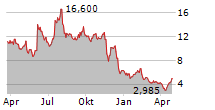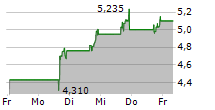
- Across 50 treated patients, palazestrant (OP-1250) in combination with ribociclib was well tolerated with no new safety signals or increased toxicity and no clinically meaningful impact on drug exposure of either therapy
- 85% clinical benefit rate (CBR) observed to date across all CBR-eligible patients supports promising preliminary efficacy profile of the palazestrant-ribociclib combination
- Olema will host an investor conference call today at 8:00 a.m. ET
SAN FRANCISCO, May 15, 2024 (GLOBE NEWSWIRE) -- Olema Pharmaceuticals, Inc. ("Olema" or "Olema Oncology," Nasdaq: OLMA), a clinical-stage biopharmaceutical company focused on the discovery, development and commercialization of targeted therapies for women's cancers, today announced interim results from an ongoing Phase 1b/2 clinical study of palazestrant (OP-1250) in combination with CDK4/6 inhibitor ribociclib for the treatment of ER+/HER2- metastatic breast cancer. These results, as of the data cut-off of March 13, 2024, will be presented on May 16, 2024, in a poster session at the 2024 ESMO Breast Cancer Annual Congress in Berlin, Germany (ESMO Breast).
The poster, titled "A Phase 1b/2 Study of Palazestrant (OP-1250) in Combination with Ribociclib in Patients with Estrogen Receptor-Positive, Human Epidermal Growth Factor Receptor 2-Negative, Advanced and/or Metastatic Breast Cancer", highlighted that:
- Across 50 treated patients, the combination of up to 120 mg of palazestrant with the full and approved dose of 600 mg of ribociclib daily was well tolerated, with no new safety signals or enhancement of toxicity and an overall safety profile consistent with the established safety profile of ribociclib plus an endocrine therapy.
- Palazestrant did not affect ribociclib drug exposure and ribociclib had no clinically meaningful effect on palazestrant drug exposure.
- Promising preliminary efficacy was observed to date with a clinical benefit rate (CBR) of 85% across all CBR-eligible patients (11/13), 83% in ESR1-mutant patients (5/6), 86% in ESR1-wild-type patients (6/7), and 83% in prior CDK4/6 inhibitor patients (10/12).
- Partial responses were observed in five patients through the data cut-off (2 confirmed, 3 unconfirmed) among 23 response-evaluable patients.
- Findings from this study support the continued clinical development of palazestrant in combination with ribociclib for the first-line treatment of ER+/HER2- advanced or metastatic breast cancer.
"The data we are presenting at the ESMO Breast Cancer Annual Congress in Berlin add further support to our thesis that palazestrant possesses key characteristics that make it a potential backbone endocrine therapy of preference for ER+/HER2- breast cancer, both as a monotherapy and in combination with other targeted agents," said Sean P. Bohen, M.D., Ph.D., President and Chief Executive Officer of Olema Oncology. "We are grateful to the approximately 300 women to date that have participated across our clinical trials. We are excited with the progress we are making, and we look forward to advancing toward our goal of transforming the endocrine therapy standard of care for breast cancer."
Phase 1b/2 Clinical Study Results
Enrollment
As of the data cut-off of March 13, 2024, 50 patients with recurrent, locally advanced or metastatic ER+/HER2- breast cancer with at least four weeks of follow-up were treated with palazestrant (3 patients each at 30 mg once daily and 60 mg once daily, 44 patients at the palazestrant recommended Phase 2 dose (RP2D) of 120 mg once daily) plus ribociclib 600 mg once daily (three weeks followed by one week off treatment). The majority of patients (37 or 74%) were 2nd/3rd line+, with 37 (74%) patients having received prior endocrine therapy for metastatic breast cancer, 35 (70%) patients having received prior CDK4/6 inhibitors (11 or 22% having received two prior lines of CDK4/6 inhibitors), and nine (18%) patients having received chemotherapy for metastatic breast cancer. Of 48 patients whose circulating tumor DNA (ctDNA) was assessed as of the data cut-off, 27% had activating mutations in ESR1 at baseline. The study is now fully enrolled with 60 patients.
Pharmacokinetics
Palazestrant demonstrated favorable pharmacokinetics characterized by high oral bioavailability, dose proportional exposure and a half-life of eight days as a single agent, with steady-state plasma levels showing minimal peak-to-trough variability enabling consistent inhibition of ER for the full dosing interval. Palazestrant did not affect ribociclib 600 mg drug exposure when compared with published exposure data for single-agent ribociclib. Steady-state trough values showed no clinically significant difference between the combination and single-agent palazestrant.
Safety and Tolerability
Treatment with palazestrant up to the RP2D of 120 mg was well tolerated with no dose-limiting toxicities, and the maximum tolerated dose (MTD) was not reached. The majority of treatment-emergent adverse events (TEAEs) were Grade 1 or 2, and the severity and incidence of adverse events were consistent with the expected safety profile of ribociclib plus endocrine therapy. Ten patients had dose reduction of ribociclib only, due to QTcF prolongation (n=4), neutropenia (n=4), or fatigue (n=2). No patients discontinued palazestrant due to a treatment-related adverse event, and two patients discontinued ribociclib for neutropenia without discontinuation of palazestrant in the 120 mg cohort. Neutropenia was reversible in all patients and the timing was consistent with ribociclib-related neutropenia.
Efficacy
In a maturing dataset, palazestrant showed anti-tumor activity and prolonged disease stabilization in patients both with ESR1 wild-type and ESR1 activating mutations at baseline, and in those previously treated with one or two lines of CDK4/6 inhibitors. Partial responses were observed in five patients (two confirmed, three unconfirmed as of data cut-off) out of 23 response-evaluable patients. Across patients who were CBR-eligible, the CBR was 85% (11/13) for all patients, 83% (5/6) for patients with ESR1 mutations, 86% (6/7) for patients that were ESR1 wild-type, and for CDK4/6i-pretreated patients the CBR was 83% (10/12). The longest duration on treatment is 44 weeks through the data cut-off, and 66% (33/50) of patients in this data set remain on treatment as of the data cut-off date.
A copy of the poster will be available on Olema's website under the Science section.
Company Investor Webcast and Conference Call
Olema will host a webcast and conference call for analysts and investors to review the data being presented at ESMO Breast Cancer Annual Congress 2024 today, Wednesday, May 15, 2024, at 8:00 a.m. ET (2:00 p.m. CEST). Please register for the webcast by visiting the Investors & Media section of Olema's website at olema.com.
About Palazestrant (OP-1250)
Palazestrant (OP-1250) is a novel, orally-available small molecule with dual activity as both a complete estrogen receptor (ER) antagonist (CERAN) and selective ER degrader (SERD). It is currently being investigated in patients with recurrent, locally advanced or metastatic ER-positive (ER+), human epidermal growth factor receptor 2-negative (HER2-) breast cancer. In clinical studies, palazestrant completely blocks ER-driven transcriptional activity in both wild-type and mutant forms of metastatic ER+ breast cancer and has demonstrated anti-tumor efficacy along with attractive pharmacokinetics and exposure, favorable tolerability, CNS penetration, and combinability with CDK4/6 inhibitors. Palazestrant has been granted U.S. Food and Drug Administration (FDA) Fast Track designation for the treatment of ER+/HER2- metastatic breast cancer that has progressed following one or more lines of endocrine therapy with at least one line given in combination with a CDK4/6 inhibitor. It is being evaluated both as a single agent in an ongoing Phase 3 clinical trial, OPERA-01, and in Phase 1/2 combination studies with CDK4/6 inhibitors (palbociclib and ribociclib), a PI3Ka inhibitor (alpelisib), and an mTOR inhibitor (everolimus). For more information, please visit www.opera01study.com.
About Olema Oncology
Olema Oncology is a clinical-stage biopharmaceutical company committed to transforming the standard of care and improving outcomes for women living with cancer. Olema is advancing a pipeline of novel therapies by leveraging our deep understanding of endocrine-driven cancers, nuclear receptors, and mechanisms of acquired resistance. In addition to our lead product candidate, palazestrant (OP-1250), a proprietary, orally-available complete estrogen receptor (ER) antagonist (CERAN) and a selective ER degrader (SERD), Olema is developing a potent KAT6 inhibitor (OP-3136). Olema is headquartered in San Francisco and has operations in Cambridge, Massachusetts. For more information, please visit us at www.olema.com.
Forward Looking Statements
Statements contained in this press release regarding matters that are not historical facts are "forward-looking statements" within the meaning of Section 27A of the Securities Act of 1933 and Section 21E of the Securities Exchange Act of 1934. Words such as "anticipate," "expect," "will," "may," "goal," "potential" and similar expressions (as well as other words or expressions referencing future events, conditions or circumstances) are intended to identify forward-looking statements. These statements include those related to the potential beneficial characteristics, safety, tolerability, efficacy, and therapeutic effects of palazestrant, the development of palazestrant, the initiation and timing of clinical trials, palazestrant's combinability with other drugs, the potential of palazestrant to become a backbone endocrine therapy in the treatment of ER+/HER2- metastatic breast cancer, and Olema's potential to transform the endocrine therapy standard of care treatments for women living with ER+/HER2- metastatic breast cancer. Because such statements deal with future events and are based on Olema's current expectations, they are subject to various risks and uncertainties, and actual results, performance or achievements of Olema could differ materially from those described in or implied by the statements in this press release. These forward-looking statements are subject to risks and uncertainties, including, without limitation, those discussed in the section titled "Risk Factors" in Olema's Quarterly Report on Form 10-Q for the quarter ended March 31, 2024, and other filings and reports that Olema makes from time to time with the U.S. Securities and Exchange Commission. Except as required by law, Olema assumes no obligation to update these forward-looking statements, including in the event that actual results differ materially from those anticipated in the forward-looking statements.
Contact:
Geoffrey Mogilner, Vice President, Investor Relations and Communications
ir@olema.com





